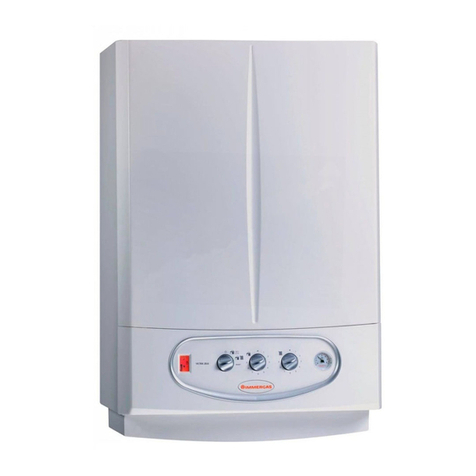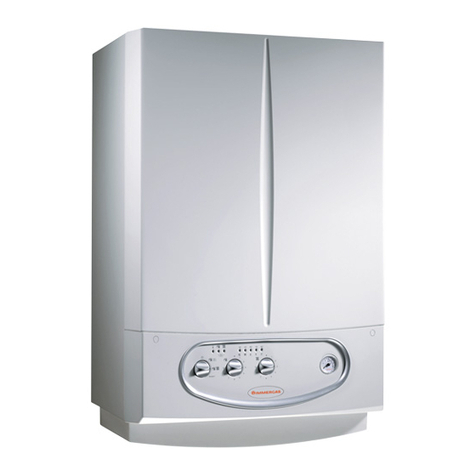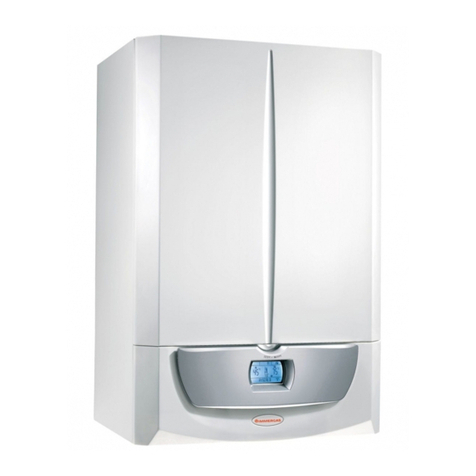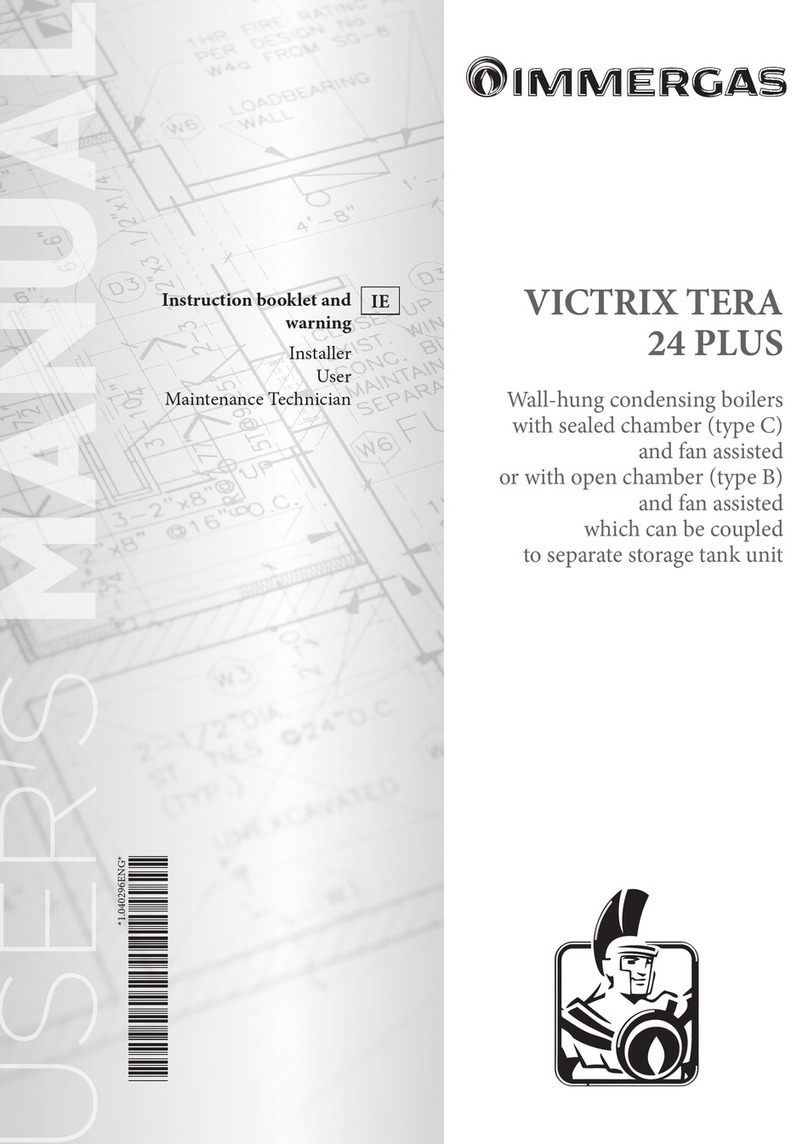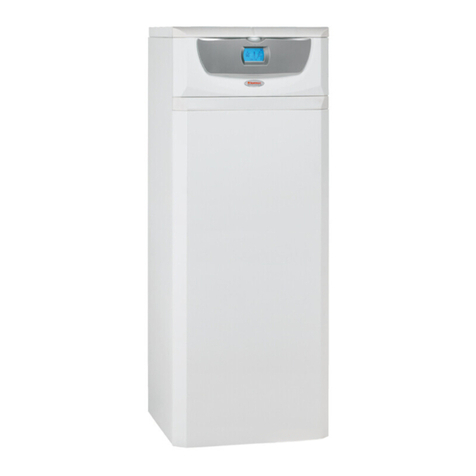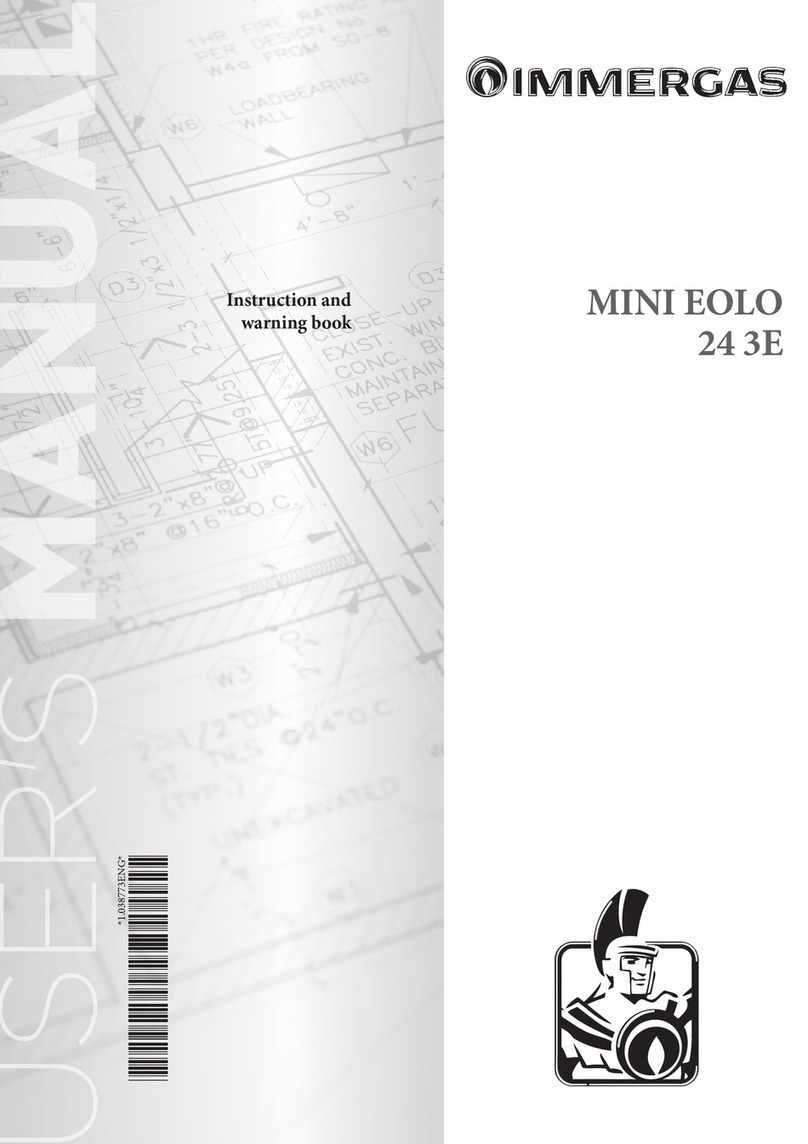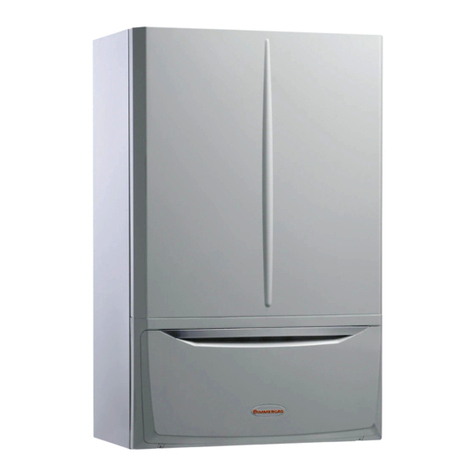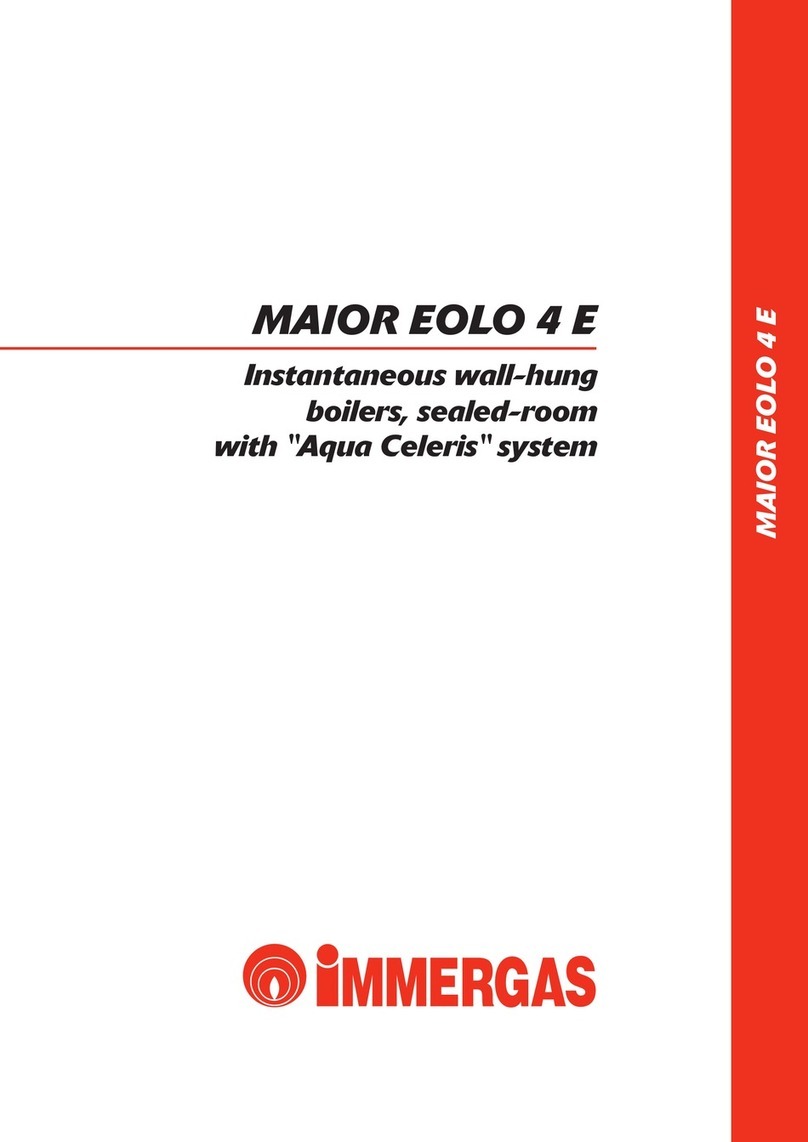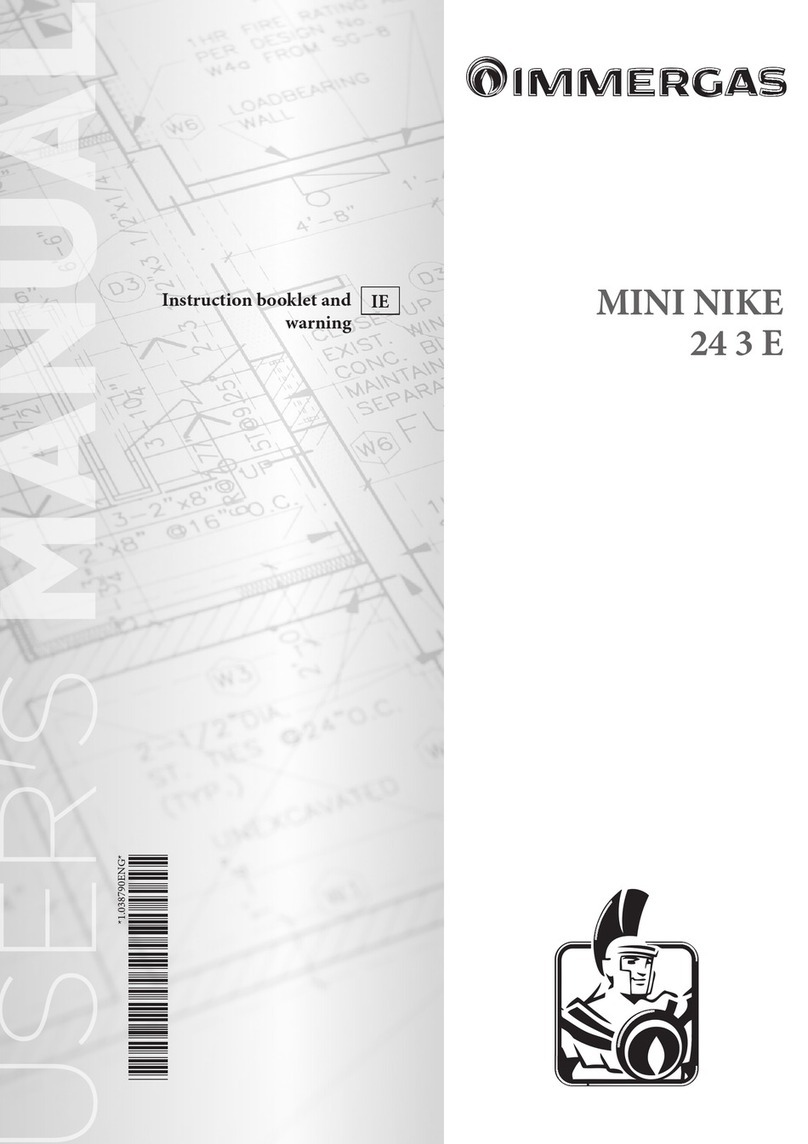GR
CZ
HU
ES
IE
PT
1.3 ANTIFREEZE PROTECTION.
Minimum temperature -5°C. e boiler is sup-
plied with an antifreeze function as standard that
activates the pump and burner when the system
water temperature in the boiler falls below 4°C.
e anti-freeze function is only guaranteed if:
- the boiler is correctly connected to gas and
electricity power supply circuits;
- the boiler is powered constantly;
- the boiler is not in “O ” mode;
- the boiler is not in no ignition block (Par.2.5);
- the boiler essential components are not faulty.
In these conditions the boiler is protected against
freezing to an environmental temperature of -5°C.
Minimum temperature -15°C. If the boiler is
installed in a place where the temperature falls
below -5°C and in the event there is no gas or
the boiler goes into ignition block, the appliance
can freeze.
To prevent the risk of freezing follow the instruc-
tions below:
- protect the central heating circuit from free-
zing by introducing a good quality anti-freeze
liquid (specically for central heating systems),
carefully following the manufacturer’s instruc-
tions regarding the percentage necessary with
respect to the minimum temperature required
for preserving the system.
The materials the boilers are made from are
resistant to ethylene and propylene glycol-based
anti-freeze liquids.
For life and possible disposal, follow the supplier’s
instructions.
- Protect the domestic hot water circuit against
freezing by using an accessory that is supplied
on request (anti-freeze kit) comprising two
electric heating elements, the relevant cables
and a control thermostat (carefully read the
installation instructions contained in the ac-
cessory kit pack).
Boiler anti-freeze protection is thus ensured only if:
- the boiler is correctly connected to electricity
power supply circuits;
- main switch is inserted;
- the anti-freeze kit components are ecient.
In these conditions the boiler is protected against
freezing to temperature of -15°C.
e warranty does not cover damage due to inter-
ruption of the electrical power supply and failure
to comply with that stated on the previous page.
N.B.: if the boiler is installed in places where
the temperature falls below 0°C, the heating
attachment pipes must be insulated.
1.4 CONNECTIONS.
Gas connection (Appliance category II2H3+).
Our boilers are designed to operate with methane
gas (G20) and LPG. Supply pipes must be the
same as or larger than the 3/4”G boiler tting.
Before connecting the gas line, carefully clean
inside all the fuel feed system pipes to remove any
residue that could impair boiler eciency. Also
make sure the gas corresponds to that for which
the boiler is prepared (see boiler data-plate). If
dierent, the appliance must be converted for
operation with the other type of gas (see conver-
ting appliance for other gas types). e dynamic
gas supply (methane or LPG) pressure must also
be checked according to the type used in the
boiler, as insucient levels can reduce generator
output and cause malfunctions.
Ensure correct gas cock connection. e gas
supply pipe must be suitably dimensioned accor-
ding to current regulations in order to guarantee
correct gas ow to the burner even in conditions
of maximum generator output and to guarantee
appliance eciency (technical specications).
e coupling system must conform to standards.
Fuel gas quality. e appliance has been desig-
ned to operate with gas free of impurities; other-
wise it is advisable to t special lters upstream
from the appliance to restore the purity of the gas.
Storage tanks (in case of supply from LPG
depot).
- New LPG storage tanks may contain residual
inert gases (nitrogen) that degrade the mixture
delivered to the appliance casing functioning
anomalies.
- Due to the composition of the LPG mixture,
layering of the mixture components may occur
during the period of storage in the tanks. is
can cause a variation in the heating power of
the mixture delivered to the appliance, with
subsequent change in its performance.
Hydraulic connection.
Important: In order not to void the warranty
before making the boiler connections, carefully
clean the heating system (pipes, radiators, etc.)
with special pickling or de-scaling products to
remove any deposits that could compromise
correct boiler operation.
In compliance with Standards in force it is man-
datory to treat the water in the heating system
chemically in order to protect the system and
appliance from deposits of lime scale.
Hydraulic connections must be made in a
rational way using the couplings on the boiler
template. e boiler safety valves outlet must be
connected to a draining funnel. Otherwise, the
manufacturer declines any responsibility in case
of ooding if the drain valve cuts in.
Important: to preserve the duration of appliance
eciency features, in the presence of water whose
features can lead to the deposit of lime scale,
installation of the “polyphosphate dispenser” kit
is recommended. On the basis of the Standards in
force, it is mandatory to treat the water with over
25 French degrees in the heating circuit and over
15 French degrees for DHW using conditioning
chemicals for powers < 100 kW or with soeners
for powers > 100 kW.
Electrical connection: e “Maior Eolo” boiler
has an IPX5D protection rating for the entire
appliance. Electrical safety of the unit is reached
when it is correctly connected to an ecient
earthing system as specied by current safety
standards.
Important: Immergas S.p.A. declines any
responsibility for damage or physical injury
caused by failure to connect the boiler to an
ecient earth system or failure to comply with
the reference standards.
Also ensure that the electrical installation corre-
sponds to maximum absorbed power specications
as shown on the boiler data-plate. Boilers are sup-
plied complete with an “X” type power cable without
plug. e power supply cable must be connected to
a 230V ±10% / 50Hz mains supply respecting L-N
polarity and earth connection .
is network
must also have a multi-pole circuit breaker with
class III over-voltage category. When replacing the
power supply cable, contact a qualied technician
(e.g. the Immergas Aer-Sales Technical Assistance
Service). e power cable must be laid as shown.
In the event of mains fuses replacement on the
connection board, use a 3.15A quick-blow fuses.
For the main power supply to the appliance,
never use adapters, multiple sockets or exten-
sion leads.
